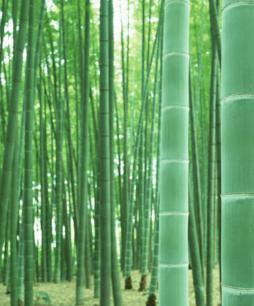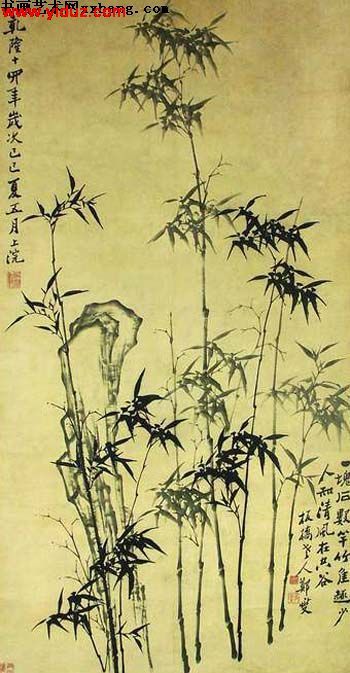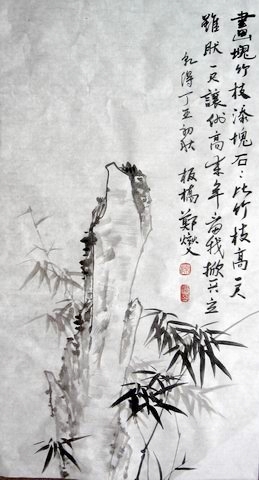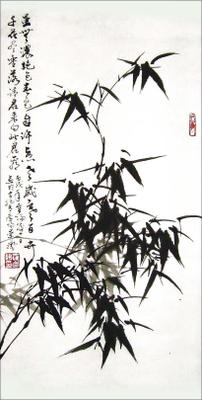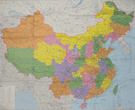|
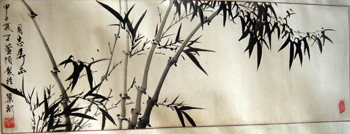
China is known
as the Kingdom of Bamboo because it has the most bamboo of any
country in the world. More than 400 species of bamboo, one third
of all known species in the world, grow in China. China leads
the world in the amount of area planted with bamboo, the number
of bamboo trees and the amount of bamboo wood produced every
year. The area that produce the most bamboo are south of
Changjiang (Yangtze) River, and the biggest producers are
Sichuan,
Anhui,
Zhejiang,
Fujian,
Hunan,
Guangdong,
Jiangxi, and
Jiangsu provinces and the
Guangxi Zhuang Autonomous Region.
The oldest archaeological finds of bamboo articles in China were
unearthed from the remains of a primitive society that existed
some 7.000 years ago in what is now Hemudu, Yuyao County,
Zhejiang Province. As early as
the Shang Dynasty (16th-11th century B.C), Chinese people used
the bamboo for making household articles and weapons, such as
bows and arrows. Before paper was invented, strips of bamboo were
the most important writing medium, more widely used than silk,
for example, because they were cheaper, resistant to corrosion,
and more abundant. Bamboo has thus played an important part in
the spread and development of traditional Chinese culture.
|
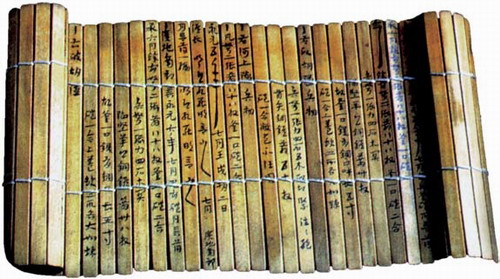
Bamboo strips used as "paper" in ancient China |
Bamboo was closely connected with the daily lives of people in
ancient China. Su Dongpo(1037-1101), a literary giant of the
Song Dynasty(960-1279), said that people could not live without
bamboo, and people of the time used bamboo as firewood and to
make tiles, paper, rafts, hats, rain capes, and shoes. At that
time, as today, bamboo shoots were eaten as a popular dish
because of their crispness and fresh, sweet taste. Bamboo shoots
also contain vitamins, sugar, fat, and protein.
In the Han Dynasty (206 B.C. A.D 220) bamboo was used for
papermaking because it produced high-quality paper and was
inexpensive: three tons of bamboo could yield one ton of paper
pulp. And bamboo is till an important raw material for
papermaking today. Some 1.600 years ago, people wrote with
brushes on xuan paper made from young bamboo, and xuan paper is
still popular for Chinese calligraphy and paintings.
Today, bamboo is widely used for household articles such as
mats, beds, pillows, benches, Chairs, cabinets, buckets,
chopsticks, spoons, baskets, and handheld fans. It is also used
to make traditional Chinese musical instruments such as the
sheng, a reed instrument; the di, a flute; and the xiao, a flute
held vertically.
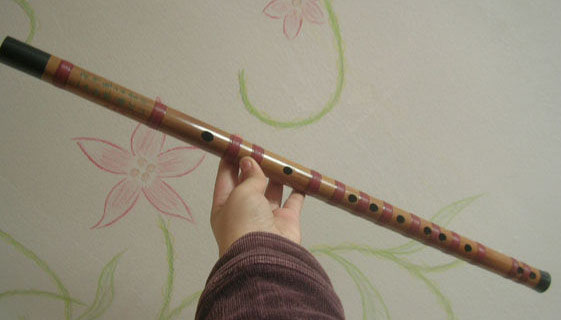 |
 |
|
Bamboo Flute (Dizi) |
Woven bamboo arts and craft come in a wide variety, including
toy animals, lanterns, flower baskets, trays, tea boxes,
screens, and curtains. Bamboo weaving is popular in the
provinces of
Guangdong,
Fuijian,
Hunan,
Sichuan, and
Anhui as well as
Zhejiang which has a history of
bamboo weaving going back more than 2.000 years.
|
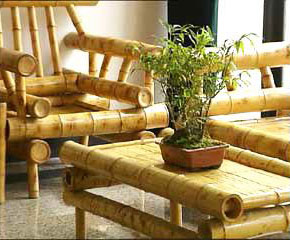
Bamboo Furniture |
Bamboo is also used in Chinese medicine. The leaves eliminate
heat and phlegm; the juice cures stroke, insanity, and a kind of
asthma caused by excessive phlegm; and the root can stimulate
the vital forces, quench thirst, and promote lactation.
Bamboo's resistance to stretching and its ability to support
weight are at least double those of other kinds of wood, making
bamboo an ideal material for houses, scaffolding, supporting
pillars, and work sheds.
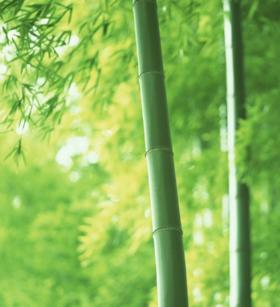
Tall and graceful with luxuriant foliage, bamboo is an ideal
plant for household courtyards and parks. It tolerates the heat
of summer and the cold of winter, it grows on unfertile land,
and it regenerates after being cut.
Throughout the centuries, bamboo has inspired the imagination of
artists, while men of letters have written poetry and prose to
express their admiration for the purity and elegance of bamboo.
They compared the qualities of bamboo to those of man, and Su
Dongpo attributed his literary inspiration to bamboo. Bamboo was
also a favorite subject of noted Chinese painters of past
dynasties.
Bamboo, a material for arts and crafts and a symbol of
integrity, has enriched the traditional Chinese culture, and
become an everlasting subject for scholars and artists.
(Source: Pictorial China, New Star
Publisher)
|



